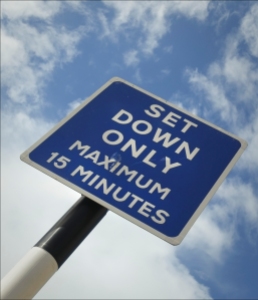Monument to the Battle of the Nations – Völkerschlachtdenkmal
The Monument to the Battle of the Nations commemorates the Battle of the Nations which took place on this site for three days in October of 1813. Over 500,000 soldiers amassed in one of the largest battles in history as coalition armies of Russia, Prussia, Austria and Sweden fought against Napoleon’s troops.
The monument stands on the spot of some of the bloodiest fighting. It is reputed that there are over 100,000 dead buried in mass graves here. Realizing his defeat, Napoleon ordered the retreat of his army and returned to France. By the next year, the Allied forces invaded France, Napoleon abdicated and in May of 1814 was exiled to Elba.
The granite and sandstone memorial, at 299 ft high, is one of the tallest monuments in all of Europe.
The 39 foot main figure on the front of the memorial represents the Archangel Michael, considered the “War God of Germans”.
The first level, the Crypt, is adorned by eight large statues representing the faces of fallen warriors.
Each one is protected by the Totenwächter or the Guardians of the Dead.
The second story, the Ruhmeshalle or the Hall of Fame, features four 31 foot statues. Each represents one of the four legendary historic qualities ascribed to the German people: bravery, faith, sacrifice, and fertility.
The cupola is decorated with primitive Germanic shapes, inspired by Egyptian and Assyrian sculpture and the inside of the Dome features a calvary of soldiers.
Oaks surround the monument, a symbol of masculine strength and endurance. These oaks are complemented with evergreens that symbolize feminine fertility.
The View From The Top
On a clear day you can see the town of Halle, 50 km to the NE.
The Nazi’s Last Stand in Leipzig, 1945
The monument was designed to commemorate the spirit of the German people, the establishment of a lasting German community and their maturation into an “organized ethnic group”. Hitler frequently used the monument as a venue for his meetings in Leipzig.
As the Allied noose tightened around Leipzig, the Völkerschlachtdenkmal monument would become the scene of one of Nazi Germany’s last stand.
Brig. Gen. of Police Wilhelm von Grolmann controlled the 3,400-strong paramilitary Leipzig police force. He saw nothing to be gained in a futile defense of the city and hoped to spare Leipzig from total destruction. Unfortunately, Colonel Hans von Poncet, who commanded a handful of German defenders, insisted he was under a direct order from Hitler not to surrender. On April 18th he withdrew to the Battle of the Nations Monument with about 150 men and enough ammunition and foodstuffs to last three months.
On the morning of April 19, Colonel Poncet, occupying the nearly impregnable position, was still defiant as the heavy artillery shells did little damage to the sturdy walls of the monument. The Germans were holding 17 American prisoners inside so American General Reinhardt decided against using flamethrowers to burn the Germans out and began negotiations. At 2am on April 20th, the diehard Nazi commander strode out of the main entrance and the monument was secured. During the negotiations, Lt. Col. Knight granted permission to the remaining handful of German solders for a 48 hour leave, allowing them to pay one last visit their homes in Leipzig. Knight supervised the disarming of the enlisted prisoners and Captain Hans Trefousse, an interrogator of German prisoners with the 273rd Infantry Regiment, guided more than a dozen of the German officers through the lines to their homes. When it was time for them to return to captivity only one failed to appear, leaving behind a note of apology.
Russian Spin
In July, the Americans withdrew from Leipzig, moving westward to the designated postwar zone of occupation and allowed the Red Army to move in. Thus began a period of Communist rule in East Germany that lasted until 1989. The government of the new German Democratic Republic was unsure whether to allow the monument to stand since it stood for steadfast German Nationalism, but because the monument was primarily linked to a battle in which Russian and German soldiers had fought together against Napoleon, it was spun to represent an example of Deutsch-russische Waffenbrüderschaft or Russo-German brotherhood-in-arms and was allowed to remain. In 1956, authorities stated that the monument could be interpreted as a symbol of “long-standing German-Russian friendship”.
After years of neglect, a 16 year restoration was started in 2003. With the exception of some landscaping and designated parking the project is just about complete.









































